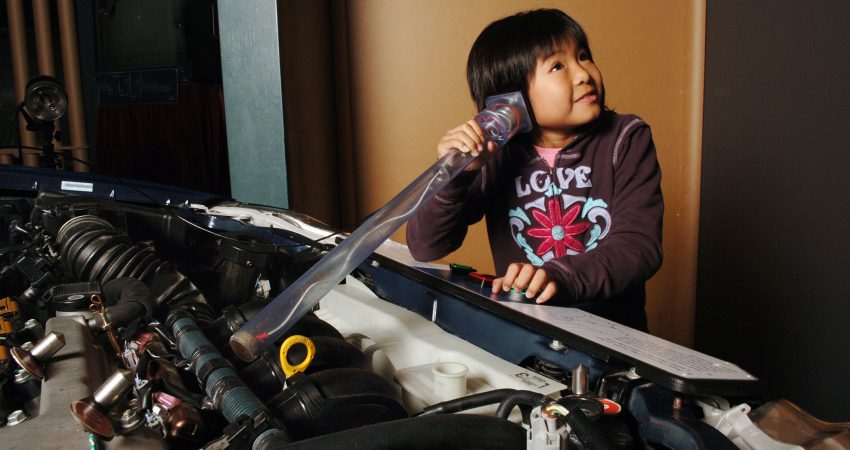
By Heather King - September 2014
PAPER CITATION
Hampp, C., & Schwan, S. (2014). The role of authentic objects in museums of the history of science and technology: Findings from a visitor study. International Journal of Science Education, Part B: Communication and Public Engagement.
Objects define museums: The collection, maintenance, and display of objects are the central functions of museum practice. Objects are vital for attracting and holding visitors’ attention. They illustrate diverse ideas, practices, and principles, and they can trigger meaning-making. Most museums favour the presentation of original objects, rather than replicas. Indeed, prior research suggests that visitors welcome the opportunity to look at renowned authentic objects (Kirchberg & Tröndle, 2012). But does authenticity confer an advantage in the communication of content?
In this study, Hampp and Schwan sought to empirically test the effects of authenticity on the perceptions of visitors. Their definition of authenticity includes objects that evolved in the real world or were produced for real-world purposes. In particular, authenticity is attributed to objects that were once in touch with significant historical events and to specimens of which only one or a few examples exist. Objects that have been crafted specifically for the museum, such as models, replicas, and interactive simulations, do not count as authentic.
Research Design
The study was conducted in the Deutsches Museum, Munich, Germany. The experimental exhibition consisted of three showcases arranged in a row. In one showcase, the object presented was chosen because it illustrated the functional aspect of the story. In the second case, the object highlighted the sociocultural context. In the third, everyday products without historical meaning were presented. The objects were all authentic, but, for this study, their status was varied by simply changing the information in the accompanying object labels and listing them as either originals or replicas. As examples of the sorts of objects displayed, an exhibit on medical technology included a wooden leg (functional focus); a corset worn by Vivien Leigh for Gone with the Wind (sociocultural focus); and contemporary breast implants (everyday focus).
After viewing the display cases, 56 participants were asked to rank the objects they had liked the most and to justify this ranking. They were also asked whether the objects they had seen were originals or replicas.
Research Findings
From their analyses of the responses, Hampp and Schwan found that participants did not evaluate objects presented as originals more highly than objects presented as replicas. However, 35 participants said that they had not questioned the status of the objects; they had assumed that the objects were authentic, as is customary in museums.
In explaining their rankings, participants offered a range of criteria. Although they did not use the term authenticity explicitly, they did refer to aspects of the object’s provenance. For example, participants appeared to value the opportunity to engage with history in examining a significant object from the past. Some described the objects as emanating an aura. The rareness of an object was often noted in reverent teams, as was the object’s ability to function properly.
In their conclusion, Hampp and Schwan state that authenticity does not play a prominent role in shaping visitors’ views of museum objects. But authenticity is still important: Visitors appeared to apply the notion of authenticity when describing the reasons for liking specific objects. Indeed, they distinguished four different dimensions of authenticity: history, charisma, rarity, and functionality.
However, in evaluating the objects, participants ranked objects that provided scientific insights more highly than others, even those that were more authentic. The authors therefore conclude that the degree to which an object in a science and technology museum conveys content is more important than its authenticity.
Implications for Practice
The findings presented here question the assumption held by many museum curators that an object has to be authentic in order to engage visitors. Although some visitors regard originals as imparting a compelling aura, it seems that specifically designed objects, such as models and interactive exhibits, can better communicate content. This advice may not be new to many exhibit designers and educators!
Perhaps a more wide-ranging recommendation from this study would be to complement the display of authentic objects with communicative models and replicas. In this way, the emotional draw of a rare and authentic object could be connected to an exhibit designed to support cognitive engagement, thus providing the visitor with both a memorable experience and an enriched understanding.
References
Kirchberg, V., & Tröndle, M. (2012). Experiencing exhibitions: A review of studies of visitor experiences in museums. Curator, 55, 435–452.




